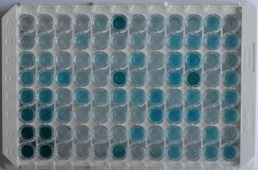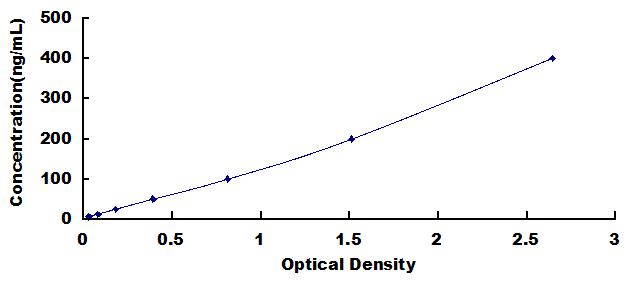Packages (Simulation)

Reagent Preparation

Image (I)
Image (II)
Certificate


- Featured-Product
ELISA Kit for Surfactant Associated Protein D (SPD)
SFTPD; COLEC7; PSP-D; SFTP4; SP-D; Pulmonary Surfactant Protein D; Collectin-7; Lung surfactant protein D
- Product No.SEB039Hu
- Organism SpeciesHomo sapiens (Human) Same name, Different species.
- Sample Typeserum, plasma, tissue homogenates, cell lysates, lung lavage fluid, cell culture supernates and other biological fluids
- Test MethodDouble-antibody Sandwich
- Assay Length3h
- Detection Range6.25-400ng/mL
- SensitivityThe minimum detectable dose of this kit is typically less than 2.21ng/mL.
- DownloadInstruction Manual
- UOM 48T96T 96T*5 96T*10 96T*100
- FOB
US$ 349
US$ 498
US$ 2241
US$ 4233
US$ 34860
For more details, please contact local distributors!
Specificity
This assay has high sensitivity and excellent specificity for detection of Surfactant Associated Protein D (SPD).
No significant cross-reactivity or interference between Surfactant Associated Protein D (SPD) and analogues was observed.
Recovery
Matrices listed below were spiked with certain level of recombinant Surfactant Associated Protein D (SPD) and the recovery rates were calculated by comparing the measured value to the expected amount of Surfactant Associated Protein D (SPD) in samples.
| Matrix | Recovery range (%) | Average(%) |
| serum(n=5) | 88-96 | 92 |
| EDTA plasma(n=5) | 79-97 | 91 |
| heparin plasma(n=5) | 78-93 | 81 |
Precision
Intra-assay Precision (Precision within an assay): 3 samples with low, middle and high level Surfactant Associated Protein D (SPD) were tested 20 times on one plate, respectively.
Inter-assay Precision (Precision between assays): 3 samples with low, middle and high level Surfactant Associated Protein D (SPD) were tested on 3 different plates, 8 replicates in each plate.
CV(%) = SD/meanX100
Intra-Assay: CV<10%
Inter-Assay: CV<12%
Linearity
The linearity of the kit was assayed by testing samples spiked with appropriate concentration of Surfactant Associated Protein D (SPD) and their serial dilutions. The results were demonstrated by the percentage of calculated concentration to the expected.
| Sample | 1:2 | 1:4 | 1:8 | 1:16 |
| serum(n=5) | 91-99% | 97-104% | 89-98% | 86-103% |
| EDTA plasma(n=5) | 85-103% | 96-105% | 99-105% | 92-101% |
| heparin plasma(n=5) | 88-95% | 92-99% | 80-101% | 94-102% |
Stability
The stability of kit is determined by the loss rate of activity. The loss rate of this kit is less than 5% within the expiration date under appropriate storage condition.
To minimize extra influence on the performance, operation procedures and lab conditions, especially room temperature, air humidity, incubator temperature should be strictly controlled. It is also strongly suggested that the whole assay is performed by the same operator from the beginning to the end.
Reagents and materials provided
| Reagents | Quantity | Reagents | Quantity |
| Pre-coated, ready to use 96-well strip plate | 1 | Plate sealer for 96 wells | 4 |
| Standard | 2 | Standard Diluent | 1×20mL |
| Detection Reagent A | 1×120µL | Assay Diluent A | 1×12mL |
| Detection Reagent B | 1×120µL | Assay Diluent B | 1×12mL |
| TMB Substrate | 1×9mL | Stop Solution | 1×6mL |
| Wash Buffer (30 × concentrate) | 1×20mL | Instruction manual | 1 |
Assay procedure summary
1. Prepare all reagents, samples and standards;
2. Add 100µL standard or sample to each well. Incubate 1 hours at 37°C;
3. Aspirate and add 100µL prepared Detection Reagent A. Incubate 1 hour at 37°C;
4. Aspirate and wash 3 times;
5. Add 100µL prepared Detection Reagent B. Incubate 30 minutes at 37°C;
6. Aspirate and wash 5 times;
7. Add 90µL Substrate Solution. Incubate 10-20 minutes at 37°C;
8. Add 50µL Stop Solution. Read at 450nm immediately.
GIVEAWAYS
INCREMENT SERVICES
-
 Single-component Reagents of Assay Kit
Single-component Reagents of Assay Kit
-
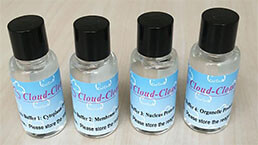 Lysis Buffer Specific for ELISA / CLIA
Lysis Buffer Specific for ELISA / CLIA
-
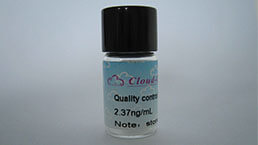 Quality Control of Kit
Quality Control of Kit
-
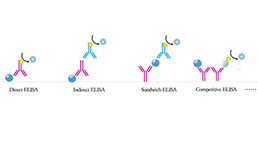 ELISA Kit Customized Service
ELISA Kit Customized Service
-
 Disease Model Customized Service
Disease Model Customized Service
-
 Serums Customized Service
Serums Customized Service
-
 TGFB1 Activation Reagent
TGFB1 Activation Reagent
-
 Real Time PCR Experimental Service
Real Time PCR Experimental Service
-
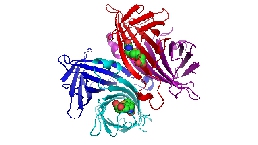 Streptavidin
Streptavidin
-
 Fast blue Protein Stain solution
Fast blue Protein Stain solution
-
 Single-component Reagents of FLIA Kit
Single-component Reagents of FLIA Kit
-
 Streptavidin-Agarose Beads
Streptavidin-Agarose Beads
| Magazine | Citations |
| The American Journal of Rhinology & Allergy | Surfactant protein A and D in chronic rhinosinusitis with nasal polyposis and corticosteroid response Ingenta: art00005 |
| J Occup Health | Evaluation of acute oxidative stress induced by NiO nanoparticles in vivo and in vitro PubMed: 21233593 |
| Inhalation Toxicology | Comparison of acute oxidative stress on rat lung induced by nano and fine-scale, soluble and insoluble metal oxide particles: NiO and TiO2 PubMed: 22642288 |
| American Journal of Rhinology & Allergy | Detection of surfactant proteins A, B, C, and D in human nasal mucosa and their regulation in chronic rhinosinusitis with polyps PubMed: 23406594 |
| Plos one | Staphylococcus aureus and Pseudomonas aeruginosa Express and Secrete Human Surfactant Proteins PubMed: PMC3551896 |
| Plos one | The Detection of Surfactant Proteins A, B, C and D in the Human Brain and Their Regulation in Cerebral Infarction, Autoimmune Conditions and Infections of the CNS PubMed: PMC3787032 |
| Nachweis und Charakterisierung des Oberfl?chenproteins PLUNC (Palate, Lung and Nasal Clone Protein) an der Augenoberfl?che und Bedeutung für das Trockene Auge Opus4:Source | |
| PLoS One | The Cerebral Surfactant System and Its Alteration in HydrocephalicConditions. pubmed:27656877 |
| Frontiers in Aging Neuroscience | Correlations of Ventricular Enlargement with Rheologically Active SurfactantProteins in Cerebrospinal Fluid. pubmed:28101052 |
| American Journal of Physiology. Lung Cellular and Molecular Physiology | Chronic lung injury and impaired pulmonary function in a mouse model of acid ceramidase deficiency. pubmed:29167126 |
| Molecular Neurobiology | Rheologically Essential Surfactant Proteins of the CSF Interacting with Periventricular White Matter Changes in Hydrocephalus Patients–Implications for CSF … Doi: 10.1007/s12035-019-01648-z |
| Respir Res | Elevated plasma levels of epithelial and endothelial cell markers in COVID-19 survivors with reduced lung diffusing capacity six months after hospital … Pubmed:35189887 |
| Virology Journal | The association between sPD-1 levels versus liver biochemistry and viral markers in chronic hepatitis B patients: a comparative study of different sPD-1 … Pubmed:35361235 |

